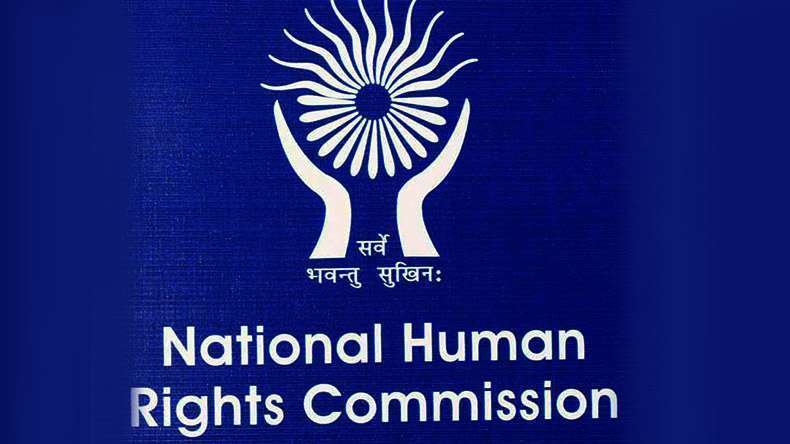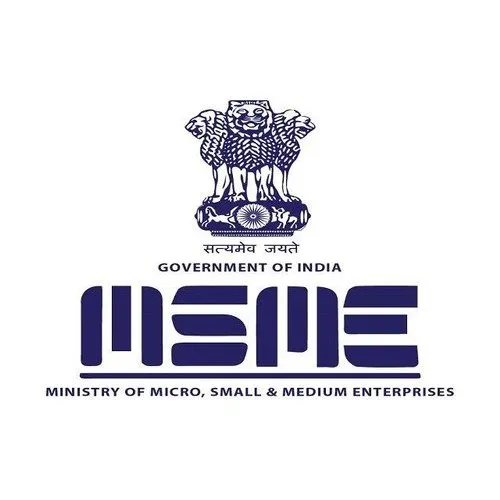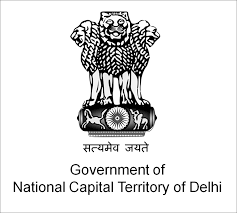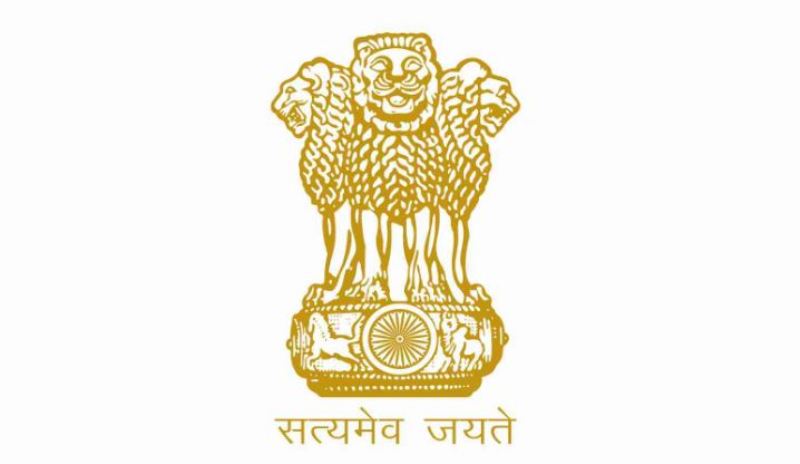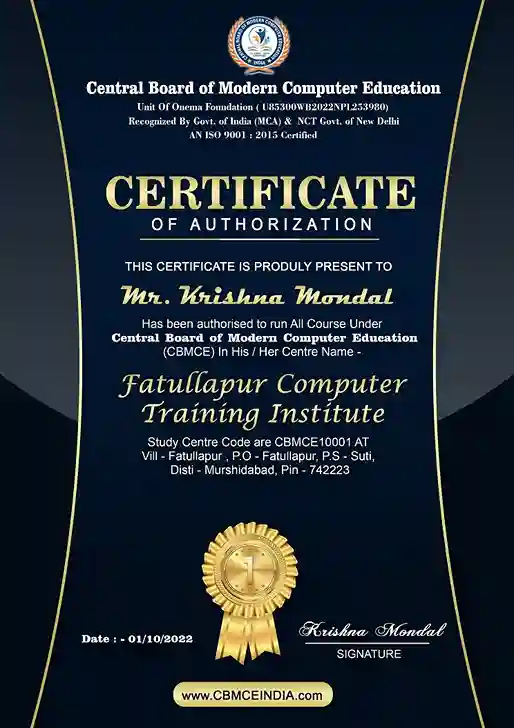60 Important Questions on Understanding Cache Memory for Learners
Q1.
What is the main purpose of cache memory?
a) To store permanent data
b) To speed up CPU processing
c) To replace RAM
d) To backup hard disk
✅ Answer: b) To speed up CPU processing
📘 Reasoning: Cache stores frequently used instructions close to CPU, reducing access time.
বাংলা:
Cache Memory-এর মূল কাজ কী?
উত্তর: CPU-এর প্রসেসিং দ্রুত করা
কারণ: Cache বারবার ব্যবহৃত ডেটা CPU-র কাছে রাখে।
Q2.
Cache memory is usually located:
a) Inside the CPU
b) In the hard disk
c) On the monitor
d) In external devices
✅ Answer: a) Inside the CPU
📘 Reasoning: Modern CPUs have in-built cache memory.
বাংলা:
Cache Memory সাধারণত কোথায় থাকে?
উত্তর: CPU-এর ভেতরে
কারণ: আধুনিক CPU-তে cache built-in থাকে।
Q3.
Which type of memory is faster than RAM but smaller in size?
a) Hard Disk
b) Cache Memory
c) Virtual Memory
d) Flash Memory
✅ Answer: b) Cache Memory
📘 Reasoning: Cache is faster but limited compared to RAM.
বাংলা:
RAM-এর চেয়ে দ্রুত কিন্তু আকারে ছোট কোন মেমোরি?
উত্তর: Cache Memory
কারণ: Cache দ্রুততর হলেও ছোট।
Q4.
Cache memory is classified into how many levels?
a) 1
b) 2
c) 3
d) 4
✅ Answer: c) 3
📘 Reasoning: Cache is generally L1, L2, L3 in modern processors.
বাংলা:
Cache Memory কত লেভেলে ভাগ করা হয়?
উত্তর: 3
কারণ: L1, L2, L3 cache থাকে।
Q5.
Which cache is the smallest and fastest?
a) L1 Cache
b) L2 Cache
c) L3 Cache
d) Virtual Cache
✅ Answer: a) L1 Cache
📘 Reasoning: L1 is closest to CPU cores, so fastest.
বাংলা:
সবচেয়ে ছোট এবং দ্রুত Cache কোনটি?
উত্তর: L1 Cache
কারণ: এটি CPU-র একেবারে কাছে থাকে।
Q6.
Which cache is shared by all cores in a multi-core processor?
a) L1 Cache
b) L2 Cache
c) L3 Cache
d) None
✅ Answer: c) L3 Cache
📘 Reasoning: L3 cache is larger and shared among all cores.
বাংলা:
Multi-core processor-এ কোন Cache সব কোর শেয়ার করে?
উত্তর: L3 Cache
কারণ: এটি বড় এবং shared থাকে।
Q7.
Which term refers to the situation when required data is found in cache?
a) Cache Miss
b) Cache Hit
c) Cache Block
d) Cache Error
✅ Answer: b) Cache Hit
📘 Reasoning: Cache hit = requested data is available in cache.
বাংলা:
যখন প্রয়োজনীয় ডেটা Cache-এ পাওয়া যায়, তাকে কী বলে?
উত্তর: Cache Hit
কারণ: Cache-এ ডেটা পাওয়া গেছে।
Q8.
When data is not available in cache, it is called:
a) Cache Hit
b) Cache Miss
c) Cache Delay
d) Cache Error
✅ Answer: b) Cache Miss
📘 Reasoning: Cache miss forces CPU to fetch data from RAM.
বাংলা:
Cache-এ ডেটা না পেলে তাকে কী বলে?
উত্তর: Cache Miss
কারণ: তখন CPU-কে RAM থেকে ডেটা আনতে হয়।
Q9.
Which is faster?
a) RAM
b) Hard Disk
c) Cache Memory
d) Virtual Memory
✅ Answer: c) Cache Memory
📘 Reasoning: Cache is closest to CPU and fastest to access.
বাংলা:
সবচেয়ে দ্রুত কোনটি?
উত্তর: Cache Memory
কারণ: CPU-র কাছে থাকে।
Q10.
Cache memory is implemented using which type of memory technology?
a) DRAM
b) SRAM
c) Flash
d) ROM
✅ Answer: b) SRAM
📘 Reasoning: Cache is built using SRAM as it is faster than DRAM.
বাংলা:
Cache Memory কোন মেমোরি প্রযুক্তি দিয়ে তৈরি হয়?
উত্তর: SRAM
কারণ: SRAM DRAM-এর চেয়ে দ্রুত।
Q11.
Which level of cache is directly connected to the CPU core?
a) L1 Cache
b) L2 Cache
c) L3 Cache
d) Virtual Cache
✅ Answer: a) L1 Cache
📘 Reasoning: L1 cache is integrated into the CPU core for fastest access.
বাংলা:
CPU কোরের সঙ্গে সরাসরি যুক্ত Cache কোনটি?
উত্তর: L1 Cache
কারণ: এটি CPU কোরের ভেতরেই থাকে।
Q12.
Which cache level is larger but slower than L1?
a) L2 Cache
b) L3 Cache
c) Virtual Cache
d) None
✅ Answer: a) L2 Cache
📘 Reasoning: L2 is bigger in size but slightly slower than L1.
বাংলা:
L1 এর থেকে বড় কিন্তু ধীর Cache কোনটি?
উত্তর: L2 Cache
কারণ: আকারে বড় কিন্তু কিছুটা ধীর।
Q13.
The average time to access memory considering cache hit and miss is called:
a) Cache Latency
b) Effective Access Time
c) Memory Delay
d) CPU Cycle
✅ Answer: b) Effective Access Time
📘 Reasoning: Effective Access Time = Hit time + Miss penalty × Miss rate.
বাংলা:
Cache hit আর miss মিলিয়ে গড়ে যে সময় লাগে তাকে কী বলে?
উত্তর: Effective Access Time
কারণ: এটি hit ও miss-এর উপর নির্ভর করে।
Q14.
Which mapping technique places data block in a fixed cache location?
a) Direct Mapping
b) Associative Mapping
c) Set Associative Mapping
d) Random Mapping
✅ Answer: a) Direct Mapping
📘 Reasoning: Direct mapping fixes each memory block to one cache line.
বাংলা:
কোন mapping পদ্ধতিতে ডেটা নির্দিষ্ট cache লাইনে রাখা হয়?
উত্তর: Direct Mapping
কারণ: প্রতিটি ব্লকের জন্য নির্দিষ্ট cache লাইন থাকে।
Q15.
Which mapping allows any memory block to be placed in any cache line?
a) Direct Mapping
b) Associative Mapping
c) Set Associative Mapping
d) Indexed Mapping
✅ Answer: b) Associative Mapping
📘 Reasoning: Associative mapping is flexible but costly.
বাংলা:
কোন mapping-এ যেকোনো ব্লক যেকোনো cache লাইনে রাখা যায়?
উত্তর: Associative Mapping
কারণ: এটি flexible কিন্তু ব্যয়বহুল।
Q16.
Which mapping is a compromise between direct and associative mapping?
a) Random Mapping
b) Set Associative Mapping
c) Indexed Mapping
d) Hash Mapping
✅ Answer: b) Set Associative Mapping
📘 Reasoning: Set-associative combines benefits of direct and associative mapping.
বাংলা:
Direct আর Associative mapping-এর মধ্যে মধ্যবর্তী কোন পদ্ধতি?
উত্তর: Set Associative Mapping
কারণ: এটি দুইটির বৈশিষ্ট্য মিলিয়ে কাজ করে।
Q17.
Cache memory improves performance by reducing:
a) CPU clock speed
b) Memory latency
c) Hard disk size
d) Data redundancy
✅ Answer: b) Memory latency
📘 Reasoning: Cache reduces average memory access delay.
বাংলা:
Cache Memory কী কমিয়ে পারফরম্যান্স বাড়ায়?
উত্তর: Memory latency
কারণ: ডেটা আনতে কম সময় লাগে।
Q18.
Which memory hierarchy is fastest to slowest?
a) Register → Cache → RAM → Hard Disk
b) Cache → Register → RAM → Hard Disk
c) Hard Disk → RAM → Cache → Register
d) RAM → Cache → Hard Disk → Register
✅ Answer: a) Register → Cache → RAM → Hard Disk
📘 Reasoning: Registers are fastest, then cache, RAM, then disk.
বাংলা:
সবচেয়ে দ্রুত থেকে ধীর ক্রমানুসারে সঠিক মেমোরি ক্রম কোনটি?
উত্তর: Register → Cache → RAM → Hard Disk
কারণ: Register দ্রুততম এবং Disk সবচেয়ে ধীর।
Q19.
Which unit directly communicates with cache memory?
a) Input Unit
b) Control Unit
c) CPU
d) Secondary Storage
✅ Answer: c) CPU
📘 Reasoning: Cache is closest to CPU for faster communication.
বাংলা:
Cache Memory সরাসরি কার সঙ্গে যোগাযোগ করে?
উত্তর: CPU
কারণ: Cache CPU-র গতি বাড়াতে তৈরি।
Q20.
Which factor determines the efficiency of cache memory?
a) Cache Hit Ratio
b) Cache Miss Ratio
c) Both a and b
d) None
✅ Answer: a) Cache Hit Ratio
📘 Reasoning: Higher hit ratio = better cache performance.
বাংলা:
Cache Memory-এর কার্যকারিতা কোনটির উপর নির্ভর করে?
উত্তর: Cache Hit Ratio
কারণ: Hit বেশি হলে পারফরম্যান্স ভালো।
Q21.
In CPU design, cache memory acts as:
a) Primary memory
b) Secondary memory
c) Buffer between CPU and RAM
d) External storage
✅ Answer: c) Buffer between CPU and RAM
📘 Reasoning: Cache bridges the speed gap between CPU and RAM.
বাংলা:
CPU ডিজাইনে Cache Memory কী হিসেবে কাজ করে?
উত্তর: CPU ও RAM-এর মাঝে buffer।
Q22.
The miss penalty in cache refers to:
a) Time to fetch data from RAM when not in cache
b) Time to store data in cache
c) CPU cycle delay due to execution
d) None of these
✅ Answer: a) Time to fetch data from RAM when not in cache
📘 Reasoning: Miss penalty = delay when cache miss occurs.
বাংলা:
Cache miss হলে RAM থেকে ডেটা আনার সময়কে কী বলে?
উত্তর: Miss penalty।
Q23.
Which replacement policy removes the block that was used least recently?
a) FIFO
b) LRU
c) Random
d) MRU
✅ Answer: b) LRU (Least Recently Used)
📘 Reasoning: LRU replaces the least recently accessed block.
বাংলা:
যে ব্লক দীর্ঘ সময় ব্যবহার হয়নি সেটি কোন policy-তে বাদ দেওয়া হয়?
উত্তর: LRU।
Q24.
Which cache replacement policy is simplest but less efficient?
a) FIFO
b) LRU
c) LFU
d) Random
✅ Answer: a) FIFO
📘 Reasoning: FIFO is simple but not always optimal.
বাংলা:
সবচেয়ে সহজ কিন্তু কম কার্যকর cache policy কোনটি?
উত্তর: FIFO।
Q25.
Cache memory is implemented using:
a) DRAM
b) SRAM
c) ROM
d) EPROM
✅ Answer: b) SRAM
📘 Reasoning: SRAM is faster but expensive, used in cache.
বাংলা:
Cache Memory কোন প্রযুক্তিতে তৈরি?
উত্তর: SRAM।
Q26.
Which type of locality refers to reusing recently accessed data?
a) Spatial Locality
b) Temporal Locality
c) Local Locality
d) Random Locality
✅ Answer: b) Temporal Locality
📘 Reasoning: Temporal locality = data used recently is likely reused soon.
বাংলা:
সম্প্রতি ব্যবহৃত ডেটা আবার ব্যবহারের সম্ভাবনাকে কী বলে?
উত্তর: Temporal Locality।
Q27.
Which type of locality refers to accessing data near the previously accessed address?
a) Spatial Locality
b) Temporal Locality
c) Random Locality
d) None
✅ Answer: a) Spatial Locality
📘 Reasoning: Nearby memory locations are often accessed together.
বাংলা:
যে locality-তে কাছাকাছি address ব্যবহৃত হয় তাকে কী বলে?
উত্তর: Spatial Locality।
Q28.
The effectiveness of cache memory is measured in terms of:
a) Access Speed
b) Hit Ratio
c) Cost per bit
d) Bandwidth
✅ Answer: b) Hit Ratio
📘 Reasoning: Higher hit ratio = better cache effectiveness.
বাংলা:
Cache Memory-এর কার্যকারিতা কোন মাপকাঠিতে নির্ধারিত হয়?
উত্তর: Hit Ratio।
Q29.
Which of the following is NOT a cache replacement algorithm?
a) FIFO
b) LRU
c) Optimal
d) Paging
✅ Answer: d) Paging
📘 Reasoning: Paging is a memory management scheme, not a cache replacement algorithm.
বাংলা:
নিচের কোনটি Cache replacement algorithm নয়?
উত্তর: Paging।
Q30.
The term “multi-level cache” refers to:
a) Cache divided among multiple CPUs
b) Multiple caches like L1, L2, L3
c) Cache used in RAM and CPU
d) None of these
✅ Answer: b) Multiple caches like L1, L2, L3
📘 Reasoning: Multi-level = hierarchy of cache (L1, L2, L3).
বাংলা:
Multi-level Cache বলতে কী বোঝায়?
উত্তর: L1, L2, L3 cache স্তর।
Q31.
Cache memory is located between:
a) CPU and Hard Disk
b) CPU and Main Memory
c) CPU and ALU
d) RAM and ROM
✅ Answer: b) CPU and Main Memory
📘 Reasoning: Cache reduces the speed gap between CPU and RAM.
বাংলা:
Cache Memory কোথায় থাকে?
উত্তর: CPU ও Main Memory-এর মাঝে।
Q32.
The performance of cache memory is most affected by:
a) Clock speed
b) Hit ratio
c) Word length
d) Bus width
✅ Answer: b) Hit ratio
📘 Reasoning: High hit ratio ensures faster performance.
বাংলা:
Cache Memory-এর কার্যকারিতা সবচেয়ে বেশি নির্ভর করে কিসের উপর?
উত্তর: Hit ratio।
Q33.
Which of the following is true about L1 cache?
a) Located on motherboard
b) Located inside CPU chip
c) Slower than RAM
d) Cheaper than DRAM
✅ Answer: b) Located inside CPU chip
📘 Reasoning: L1 cache is directly integrated into the processor.
বাংলা:
L1 Cache কোথায় থাকে?
উত্তর: CPU chip-এর ভেতরে।
Q34.
Which of the following is the fastest?
a) L1 Cache
b) L2 Cache
c) L3 Cache
d) RAM
✅ Answer: a) L1 Cache
📘 Reasoning: L1 is closest to CPU, hence fastest.
বাংলা:
সবচেয়ে দ্রুত কোনটি?
উত্তর: L1 Cache।
Q35.
Cache hit means:
a) Data found in RAM
b) Data found in Cache
c) Data not found in Cache
d) Data stored in Hard Disk
✅ Answer: b) Data found in Cache
📘 Reasoning: Cache hit = requested data already in cache.
বাংলা:
Cache hit মানে কী?
উত্তর: ডেটা Cache-এ পাওয়া গেছে।
Q36.
Which is NOT a cache mapping technique?
a) Direct Mapping
b) Associative Mapping
c) Set-Associative Mapping
d) Sector Mapping
✅ Answer: d) Sector Mapping
📘 Reasoning: Sector mapping is used in disk, not cache.
বাংলা:
Cache mapping technique নয় কোনটি?
উত্তর: Sector Mapping।
Q37.
Which memory hierarchy is correct (fastest to slowest)?
a) Hard Disk → Cache → RAM → Register
b) Register → Cache → RAM → Hard Disk
c) Cache → Register → RAM → Hard Disk
d) RAM → Cache → Register → Hard Disk
✅ Answer: b) Register → Cache → RAM → Hard Disk
📘 Reasoning: Registers are fastest, HDD slowest.
বাংলা:
Memory hierarchy সঠিক ক্রম কোনটি?
উত্তর: Register → Cache → RAM → Hard Disk।
Q38.
Cache memory reduces the:
a) CPU execution speed
b) Memory access time
c) Cost of system
d) Power consumption
✅ Answer: b) Memory access time
📘 Reasoning: Cache provides faster access to data.
বাংলা:
Cache Memory কোনটা কমায়?
উত্তর: Memory access time।
Q39.
In multi-core processors, each core usually has:
a) Separate L1 cache, shared L2/L3
b) Shared L1 cache, separate L2/L3
c) No cache at all
d) Only shared cache
✅ Answer: a) Separate L1 cache, shared L2/L3
📘 Reasoning: Each core needs its own L1, but higher levels may be shared.
বাংলা:
Multi-core processor-এ cache কিভাবে ভাগ হয়?
উত্তর: প্রতিটি core-এর আলাদা L1 থাকে, L2/L3 শেয়ার হয়।
Q40.
Which exam frequently asks about “Cache hit ratio”?
a) SSC
b) GATE
c) Railway
d) Banking
✅ Answer: b) GATE
📘 Reasoning: GATE (CS) has theoretical + numerical cache questions.
বাংলা:
“Cache hit ratio” বিষয়টি কোন পরীক্ষায় বেশি আসে?
উত্তর: GATE।
Q41.
Which of the following is closest in speed to CPU registers?
a) RAM
b) Cache
c) Hard Disk
d) Virtual Memory
✅ Answer: b) Cache
📘 Reasoning: Cache is much faster and closest to registers.
বাংলা:
CPU register-এর গতির সবচেয়ে কাছাকাছি কোনটি?
উত্তর: Cache।
Q42.
The main disadvantage of cache memory is:
a) Low speed
b) High cost
c) Complex operation
d) Low reliability
✅ Answer: b) High cost
📘 Reasoning: Cache uses expensive SRAM.
বাংলা:
Cache Memory-এর প্রধান অসুবিধা কী?
উত্তর: High cost।
Q43.
Which is NOT a characteristic of cache memory?
a) Volatile
b) Expensive
c) Slowest memory
d) Fast
✅ Answer: c) Slowest memory
📘 Reasoning: Cache is fastest, not slowest.
বাংলা:
Cache Memory-এর বৈশিষ্ট্য নয় কোনটি?
উত্তর: Slowest memory।
Q44.
Cache mapping technique that gives maximum flexibility is:
a) Direct Mapping
b) Associative Mapping
c) Set-Associative Mapping
d) Random
✅ Answer: b) Associative Mapping
📘 Reasoning: Any block can be stored in any cache line.
বাংলা:
সবচেয়ে flexible cache mapping কোনটি?
উত্তর: Associative Mapping।
Q45.
Which replacement policy is used in most modern systems?
a) FIFO
b) LRU
c) LFU
d) Random
✅ Answer: b) LRU
📘 Reasoning: Least Recently Used policy is widely used.
বাংলা:
আধুনিক সিস্টেমে সবচেয়ে বেশি ব্যবহৃত replacement policy কোনটি?
উত্তর: LRU।
Q46.
Cache memory is often described as:
a) Static RAM
b) Dynamic RAM
c) ROM
d) Flash
✅ Answer: a) Static RAM
📘 Reasoning: Cache uses SRAM, not DRAM.
বাংলা:
Cache Memory সাধারণত কী দিয়ে তৈরি হয়?
উত্তর: Static RAM।
Q47.
The speed difference reduced by cache is between:
a) CPU and Hard Disk
b) CPU and RAM
c) CPU and Input Devices
d) RAM and ROM
✅ Answer: b) CPU and RAM
📘 Reasoning: Cache balances the speed gap.
বাংলা:
Cache কোন দুইয়ের মধ্যে speed gap কমায়?
উত্তর: CPU এবং RAM।
Q48.
Which exam often asks “L1, L2, L3 cache differences”?
a) Banking
b) Railway
c) SSC
d) NET
✅ Answer: c) SSC
📘 Reasoning: SSC exams often ask theory-based questions.
বাংলা:
“L1, L2, L3 cache differences” কোন পরীক্ষায় বেশি আসে?
উত্তর: SSC।
Q49.
Cache performance can be mathematically expressed as:
a) Hit ratio = (Cache hits / Total access) × 100
b) Hit ratio = (Cache misses / Total access) × 100
c) Hit ratio = (Cache hits + misses) / Total access
d) None
✅ Answer: a) Hit ratio = (Cache hits / Total access) × 100
📘 Reasoning: Formula defines cache efficiency.
বাংলা:
Cache performance-এর সূত্র কী?
উত্তর: Hit ratio = (Cache hits / Total access) × 100।
Q50.
Which cache is shared among multiple cores?
a) L1
b) L2
c) L3
d) All levels
✅ Answer: c) L3
📘 Reasoning: L3 cache is usually shared by all cores.
বাংলা:
Multiple core-এর মধ্যে কোন cache শেয়ার করা হয়?
উত্তর: L3 Cache।
Q51.
If a program makes 200 memory accesses and 160 are cache hits, what is the hit ratio?
a) 60%
b) 70%
c) 80%
d) 90%
✅ Answer: c) 80%
📘 Reasoning: Hit ratio = (160 ÷ 200) × 100 = 80%.
বাংলা:
একটি প্রোগ্রাম ২০০ বার memory access করল, তার মধ্যে ১৬০ বার cache hit হলো। Hit ratio কত?
উত্তর: 80%।
Q52.
In a system, cache access time = 5 ns and main memory access time = 50 ns. If hit ratio = 0.9, what is average access time?
a) 10 ns
b) 9.5 ns
c) 14.5 ns
d) 15 ns
✅ Answer: b) 9.5 ns
📘 Reasoning: Avg time = (Hit ratio × Cache time) + (Miss ratio × Memory time) = (0.9×5) + (0.1×50) = 9.5 ns.
বাংলা:
Cache time = 5 ns, Main memory = 50 ns, Hit ratio = 0.9 হলে Average access time কত?
উত্তর: 9.5 ns।
Q53.
Which of the following cache organizations gives lowest miss rate?
a) Direct mapped cache
b) Fully associative cache
c) Set associative cache
d) Random mapped cache
✅ Answer: b) Fully associative cache
📘 Reasoning: Fully associative allows any block in any cache line → lowest miss rate.
বাংলা:
কোন cache organization-এ miss rate সবচেয়ে কম?
উত্তর: Fully associative cache।
Q54.
If cache block size increases, what generally happens?
a) Miss rate increases
b) Miss rate decreases initially but may increase later
c) Hit rate decreases always
d) No effect
✅ Answer: b) Miss rate decreases initially but may increase later
📘 Reasoning: Larger block → good for spatial locality, but too large → fewer blocks → conflicts.
বাংলা:
Cache block size বাড়ালে কী হয়?
উত্তর: আগে miss rate কমে, পরে বাড়তেও পারে।
Q55.
Suppose cache has 256 blocks and main memory has 4096 blocks. In direct mapping, how many blocks of main memory map to each cache block?
a) 8
b) 16
c) 32
d) 64
✅ Answer: c) 16
📘 Reasoning: (4096 ÷ 256) = 16 main memory blocks map to one cache block.
বাংলা:
Cache = 256 block, Main memory = 4096 block। Direct mapping-এ প্রতিটি cache block-এ কত main memory block map হবে?
উত্তর: 16।
Q56.
Which of the following replacement policies is optimal but impractical?
a) FIFO
b) LRU
c) LFU
d) Optimal
✅ Answer: d) Optimal
📘 Reasoning: Optimal replacement requires knowledge of future accesses, not possible in practice.
বাংলা:
কোন replacement policy তাত্ত্বিকভাবে সেরা কিন্তু বাস্তবে ব্যবহারযোগ্য নয়?
উত্তর: Optimal।
Q57.
Cache memory is closer in speed to:
a) RAM
b) Registers
c) Hard disk
d) Virtual memory
✅ Answer: b) Registers
📘 Reasoning: Cache is much faster than RAM, only registers are faster.
বাংলা:
Cache Memory গতি অনুযায়ী কার কাছাকাছি?
উত্তর: Registers।
Q58.
In two-level cache, average access time formula is:
a) T = H1×C1 + (1-H1)×M
b) T = H1×C1 + (1-H1)[H2×C2 + (1-H2)×M]
c) T = H2×C2 + (1-H2)×M
d) T = H1 + H2
✅ Answer: b) T = H1×C1 + (1-H1)[H2×C2 + (1-H2)×M]
📘 Reasoning: First check L1, then fallback to L2, then main memory.
বাংলা:
Two-level cache-এর average access time সূত্র কোনটি?
উত্তর: T = H1×C1 + (1-H1)[H2×C2 + (1-H2)×M]।
Q59.
Which exam often asks numerical cache performance problems?
a) SSC
b) Railway
c) GATE
d) Banking
✅ Answer: c) GATE
📘 Reasoning: GATE frequently tests cache hit/miss calculations.
বাংলা:
Cache Memory সম্পর্কিত numerical সমস্যাগুলো কোন পরীক্ষায় বেশি আসে?
উত্তর: GATE।
Q60.
Which mapping technique balances flexibility and complexity?
a) Direct mapping
b) Fully associative mapping
c) Set associative mapping
d) Random mapping
✅ Answer: c) Set associative mapping
📘 Reasoning: Set associative = trade-off between direct and fully associative.
বাংলা:
কোন mapping technique-এ flexibility ও complexity-এর মধ্যে ভারসাম্য থাকে?
উত্তর: Set associative mapping।
🔗 Click Below to Get More Questions
1. Important MCQ of Computer Subject
2. 50 Questions and Answer about MS Office Word
3. HTML & CSS MCQs with Answers
4. Basic computer knowledge for competitive exams
5. Computer MCQs for Competitive Exams
6. 50 Basics Computer question for Competitive Exams
7. 50 Common Questions on Computer Generations for Beginners
8.60 Important Questions on Different Types of Computers
9. 100 Common Questions on Binary Numbers & Data Representation
10. Computer Booting Process & Components – 70 MCQs for Learners




